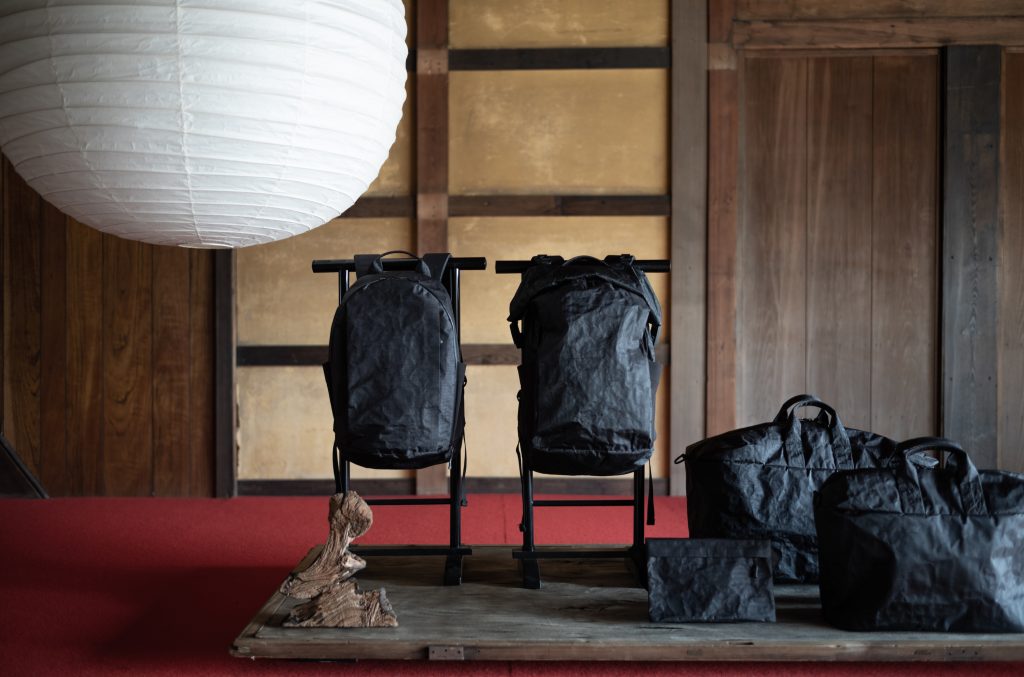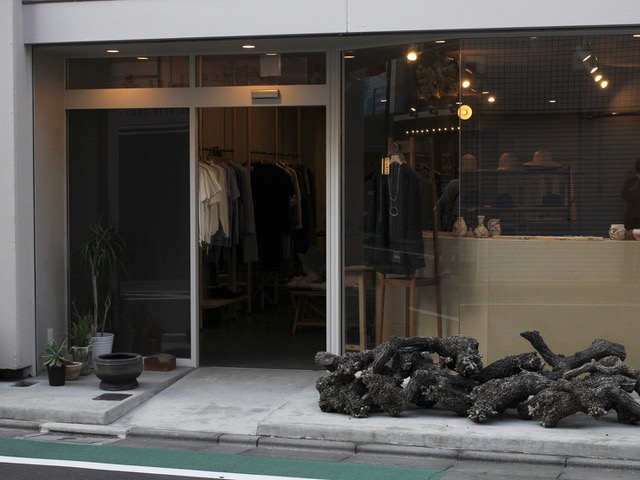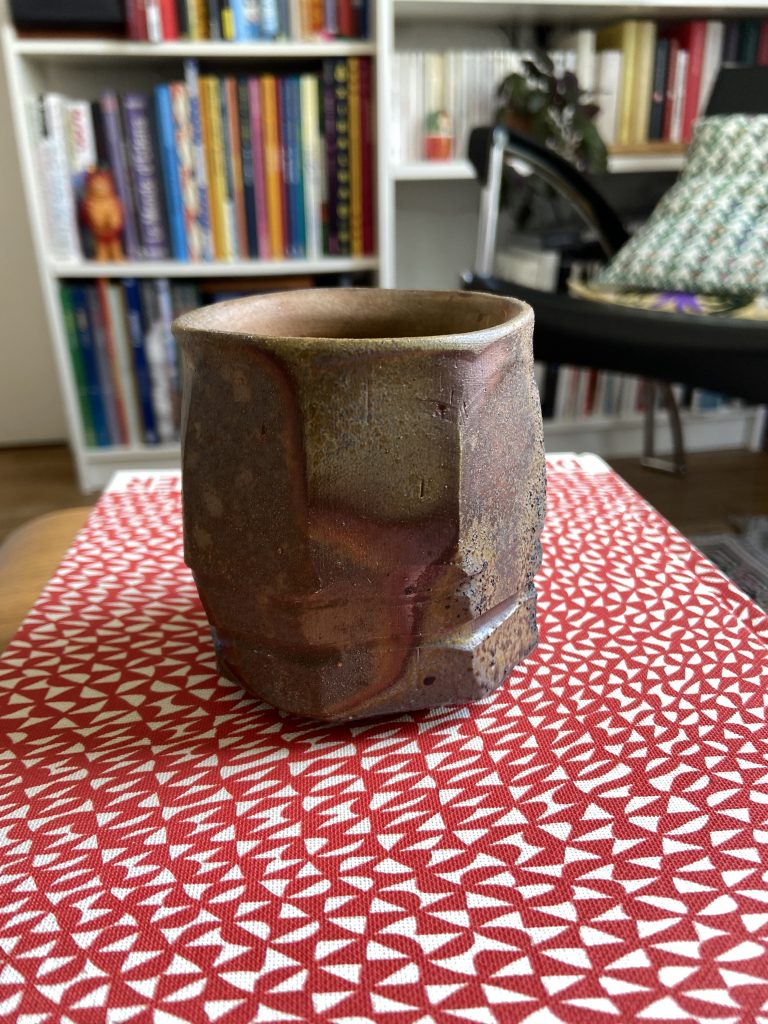Being made in Japan functions as one of the important criteria for selecting products, just as the beauty in design, functionality, trendiness and standardness does. In this series, a variety of people will introduce the cutting edge creation of “Made in Japan”, in line with our statement: social-fullness. In the first session, we talked to Emil Pacha Valencia, the editor-in-chief of the magazine “TEMPURA” from Paris, about the appeal of Made in Japan seen from outside of Japan and the items selected through his experienced eyes.
–How do you see the value of Made in Japan from outside of Japan?
Emil Pacha Valencia: Made in Japan is always a synonym of “quality”, at least from a Western point of view. In France, after decades of decay, there’s a revival of “Made in France” products, but it’s still very limited, especially in fashion. It’s actually easier to find Japan-made brands than France-made ones! Made in Japan also convoys a sense of design, style, and kind of “handmade” feel. There always this image – which in a sense is also a cliché – of a craftsmen using millennial skills to make the perfect bowl, the right indigo shirt, and so on – even though most of the time it’s factory made! Still, the quality tag remains, whatever the brand is.
–Is that something only in japan?
Emil: I think so. Some countries have specialized in a series of products, and those “made in…” products are really sought after. We think of Murano glass, Calais lace, Horween leather, British Millerain, Savile Row for bespoke tailoring, etc. But the thing with Japan made products, it’s that it concerns a very large array of products : clothes, woodwork, glass, steel and carbon knifes, lacquer, ceramics…Another cliché “when Japanese start making things, they make it better.” Well, there’s some truth in it. Only look at French or Italian gastronomy” I’ve eaten my best pizzas and the most delicious croissants in Tokyo! And of course in Japan almost each region has its specialty. You can travel throughout the country and be almost certain that you’ll come across some local craft. I know no other country that has this craftsmanship quality image and such a variety.
–What do you think is the difference and fun in manufacturing between Paris and Japan?
Emil: In Japan, I feel that people experiment more, and there are so many communities that whatever you like, you’ll definitely find yourself at ease. For men, the fashion scene is much more open in Tokyo than in Paris, there are so many brands and styles, it’s very refreshing. In Paris, fashion is much more conventional, at least for men. Recently, a men’s fashion mass market brand just changed its baseline : “be normal”. That’s so sad! Fashion is a form of expression, of social representation; being normal is being invisible, massified. “Be normal” is a form of totalitarianism! Where has the “be yourself” gone?
I tend to prefer select shops, with few curated brands, than big department stores or brand shops. I don’t buy a brand in particular, but I have my favorite shops in Tokyo which I trust to choose the styles and quality I like. I try to buy exclusively “made in Japan” articles, not only for quality’s sake, but also for ethical reasons.
Japanese brands nurtured in the rich nature and the historic city,“Rofmia”
–Please tell us about the brand.
Emil: Brand called “Rofmia” from Minokamo City, Gifu Prefecture. Taishi Takeuchi and his partner, Hiroko, do everything from design to production. Not only do they specialize in leather jackets and bags, but they also make bags made of high-tech material called hybrid Cuben fiber. I have two backpacks from this label. They are the best bags I have ever had in my life.
–-What do you like about the “Rofmia” bag?
Emil: Technology, quality, fashion, all in one bag. Everything from design to patterning, sewing and how they are sold is decided and made by the designer himself, and while it is a very minimal design, it also has high functionality. I was impressed by the fact that they are constantly trying to innovate and improving their technology. I don’t like to feel uncomfortable when wearing clothes, so when choosing clothes and items, I attach great importance to high functionality. I’m very happy that outdoor brands are proposing more stylish styles these days. The use of natural materials such as pure wool and leather is also important factor for me to select products, so in that sense, Rofmia is my great favorite.
–What is the appeal of manufacturing of “Rofmia”?
Emil: We discussed about their work, and then we profiled them in “TEMPURA”. I really wanted to feature a young brand like this, that respect the crafts, the materials and the functionality of everyday objects. That don’t want to massify their production, just doing what they like, day by day.
The discerning shop that stocks everything from used clothing to selected items, feets.
–Please tell us about the shop you want to introduce.
Emil: I’ve been walking around various cities in Tokyo looking for inspiration and new styles from the streets. I found a select shop “feets” in Yutenji. It sells not only used clothing for men but also a variety of goods created by Japanese designers, so it also has the aspect of a select shop. It’s one of the shops I’ve always checked when I went to Japan since I had found it four or five years ago.
–What do you like about it?
Emil: There is a wide range of selections, and it is fun just to speak to the staff with abundant knowledge about products. I also like the original eyewear brand created by the owner. Personally, I prefer select shop that has its own selection of brands rather than big department stores and brand shops. So I like the fact that you can choose items in line with your favorite style in the same way at this shop.
–What did you buy?
Emil: I personally focus on quality rather than quantity no matter what it may be. Therefore, although I love fashion, I don’t have a lot of clothes. I like simple cutting, wide pants, minimal colors and styles, and I always wear the wide pants from “Fujito” I bought here. I also like incense (aroma).
A lovely cup that is rustic and ragged
–Please tell us about your encounter with this cup.
Emil: Ten years ago, I came across this Bizen ware cup at a select shop in Chiba. I was fascinated by the fact that Bizen ware made from high-quality clay has an uneven texture, which makes respective pieces completely unique. When I first picked it up, it felt like a beautiful natural stone made over many years on earth. I’m always drinking sencha with this, and the taste is totally different.
–What is the appeal of made-in-Japan products, not just in terms of fashion?
Emil: Japan is about diversity. Various things are made by many craftsmen, and there always be new discoveries. I’m also a collector of earthenware, especially cups and teapots (Bizen, Tamba, Tokoname, Hagi, Echizen …), and the deeper I dug, the more I realized the fact that some craftsmen are traditional, and others are taking innovative approaches. Finding new artists and potters is fun and inspiring.
–Do you have a favorite ceramic artist?
Emil: I love the black lacquer pottery by Kenta Anzai from Fukushima and by Naotsugu Yoshida from Shizuoka. Both of them used to study under Taizo Kuroda, but now they are on their own path, redefining modern ceramics. Every geographical area of Japan has not only its own ceramics but also a variety of specialties. If you travel somewhere, you will almost certainly find some local specialties. I would like to find a new artist I haven’t met yet, find a lot of attractive potteries, and introduce them in “TEMPURA”.
Emil Pacha Valencia
Based in Paris, Emil is the Editor-in-chief of “TEMPURA Magazine”. In 2019 he started the publication of “TEMPURA” that focuses on Japanese social issues, underground culture and subculture. The project was crowdfunded and achieved 300% of the target amount at the time. So far, he has published the fifth volume.
Text mai okuhara
Edit Miyuki Matsui(Mo-Green)
Translation Shinichiro Sato






